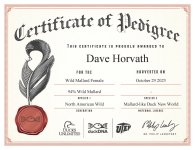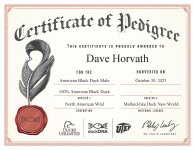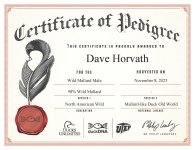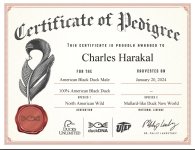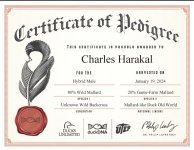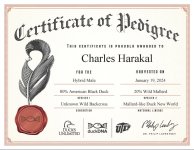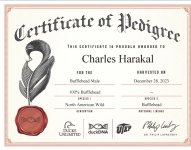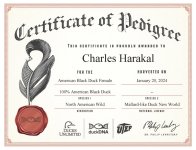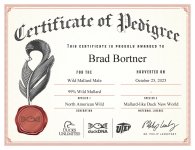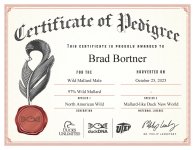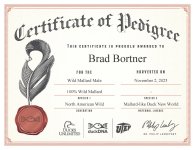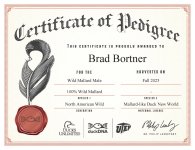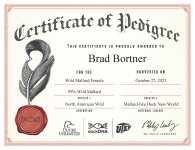If you are a waterfowl podcast listener, pick one, undoubtedly you've heard the problem of Game Farm Mallard genetics being mixed into wild mallard populations. The results are in from the Phil Lavretsky UTEP/Ducks Unlimited study. I was chosen last year as a participant in the study here are the certificates and results for the samples I submitted. Below is the explanation I received from Phil regarding the results for the samples I submitted from Northern Indiana.
- Calling wild: The ancestry that you see on your certificate is the point estimate assignment to a particular population. What you do not see is that we also calculate the standard deviation. Our cutoff to call something wild is whether the point estimate + standard deviation overlaps 95%. This is a conservative ancestry cut-off as determining the last 5% is inaccurate in most cases. So for example, the 94% was actually 94%+2% (Standard deviation = 96%, and thus it was called wild mallard as it was >= 95%. In fact, all your mallards except was considered "wild mallard."
- Old vs New World: This term is used for mitochondrial DNA only, which is maternally inherited (all offspring get it from mom only). A North American mallard should carry New World (NW) B. Any North American mallard that carries Old World (OW) A got it from a female game-farm mallard. However, it is possible to be nuclear (mom + dad) pure wild mallard but still carry an OW A mtDNA lineafge, because mtDNA can get "stuck" in a lineage. There is more specifics on that I can answer over the phone if you would like! For example, your bird that is 98% wild mallard at nuclear but carries an OW A mtDNA haplotype tells me that a female game-farm mallard was part of its lineage as a great-great-great-great....-great grandma, but because their grandparents kept interbreeding with wild mallards, they are now wild mallard at nuclear genes. I hope that makes sense?
- The 80/20 hybrid : Yes, this is a true wild x game-farm mallard hybrid that carries NW B mtDNA. This means that the hybridization at some point was male game-farm that carries an OW A x female wild mallard carries an NW B = hybrid genome but NW B mtDNA (because of mom having the NW B).

